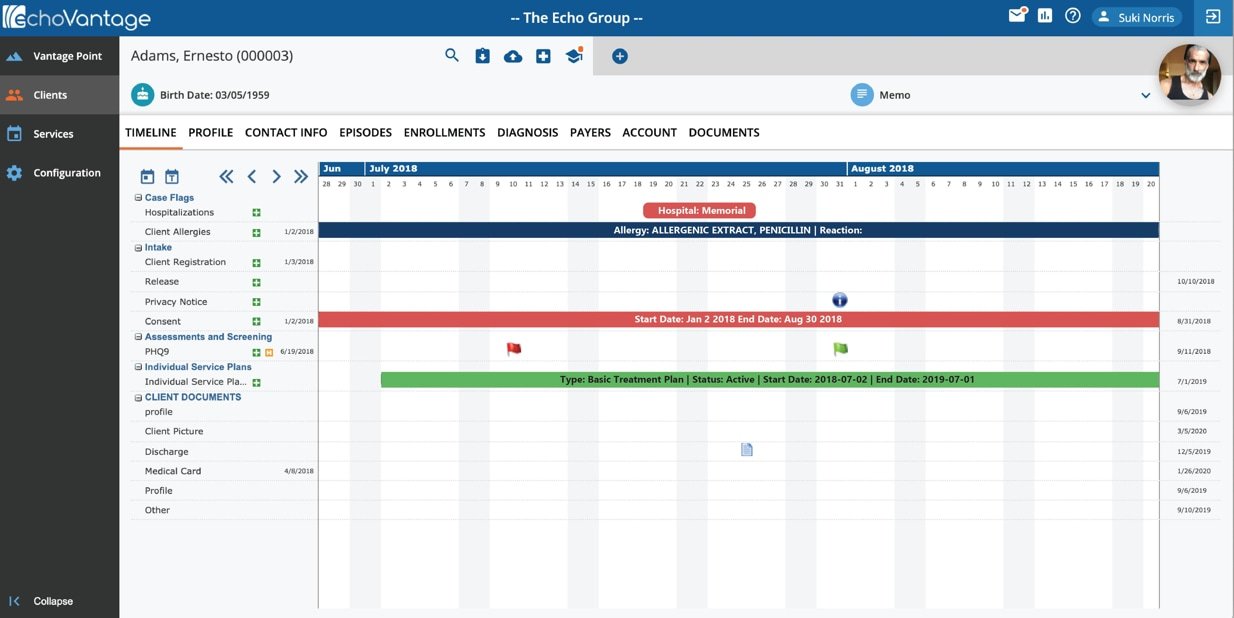What Causes Food Insecurity?
In previous articles, I addressed various elements of Social Determinants of Health (SDOH). Most recently, I have looked at Economic Stability, which has included Employment and Poverty; this article will look at Food Insecurity. Food insecurity matters because the consequences of food insecurity can affect almost every facet of society.
What is Food Insecurity?
One definition of food insecurity is the disruption of food intake or eating patterns because of a lack of money and other resources. Shortly I will discuss the various levels of food insecurity and the difference between food insecurity and Hunger. But the basic definition is important as we move through the balance of the discussion.
Why is Food Insecurity an Element of the SDOH?
Food insecurity may have one of the most extensive impacts on a person’s overall health. More than 38 million persons, including 12 million children, are currently food insecure. Persons who are food insecure are more likely to be affected by chronic disease. The risk of health problems is the unifying tenet of the SDOH.
Detailed Definitions
Food insecurity defines the inability to access healthy food regularly. Before COVID-19, 11 to 12% of households were food insecure since the onset of COVID-19, food insecurity has doubled in the United States. Women are more vulnerable to individual and household food insecurity.
There are a few other terms that relate to food insecurity. Food insufficiency refers to not having enough food to eat for a specified period of time. Undernourishment describes the state when caloric intake is below the minimum daily requirements. Undernourishment is an extreme form of food insecurity. Nutrition security considers care, health, and hygiene in addition to food insecurity. Finally, although related to food insecurity, food safety is not considered when analyzing food insecurity.
Food Security
Food security means access at all times to enough food for an active, healthy life. In 2020 89.5% of U.S. households were food secure; that number decreased due to COVID-19 to between 70% -80%. We use four dimensions in establishing food security.
- Physical availability of food.
- Economic and physical access to food.
- Food utilization by the body.
- Stability of the first three elements.
Food security requires meeting all four elements. To achieve food security at the individual, household, national, and global levels requires that all people, at all times, have physical and economic access to healthy food to meet their dietary needs for an active and healthy life.
Food Insecurity
Food insecurity involves reduced quality, variety, and access to your diet and can include disrupted eating patterns with reduced food intake. Certain groups are at higher risk of experiencing food insecurity, including households with children, unmarried people, women, and communities of color. Young adults between 18-34 experience economic and educational transitions that may create a greater risk of food insecurity. In one study, researchers looked at the health-related quality of life (HRQOL); they looked at three pillars for HRQOL. The pillars included general health, physical health, and mental health. They found that all three pillars and food insecurity were greater among rural than urban women. While only food insecurity and two pillars, poor physical health and frequent mental distress, affected urban women.
Food Insecurity – The Breakdown
We define food insecurity as one of two general types chronic or transitory. Chronic food insecurity is persistent, involves an inability to meet minimum food requirements, results from extended periods of poverty, and requires long-term development measures to address the poverty. Transitory food insecurity is short-term occurs when there is a drop in the ability to access food, usually resulting from a short-term problem. It is hard to plan for since it is hard to identify when it might hit it.
Finally, the famine early warning system, the integrated phase classification (IPC), has created a visual image of the different levels of food insecurity and indicators.
Low Food Security
Often we refer to a certain level of food insecurity as low food security. We find Low food insecurity when there is reduced quality, variety, or desirability of diet. However, we find only a little or no indication of reduced food intake at this level.
Very Low Food Security
Very low food security occurs with reduced food intake and disruption of normal eating patterns because of a lack of money and other resources for food. The annual survey reports on the levels of food security. An example of the results, “96 percent reported that an adult in the household had cut the size of meals or skipped meals because there was not enough money for food; 86 percent reported that this activity had occurred in 3 or more months during the year.”
Hunger
The definition of Hunger includes cravings for specific nutrients and an uneasy sensation caused by the lack of food. In science, we call hunger food deprivation. Often poverty is a cause of Hunger, but lack of proper nutrition is an underlying cause of poverty. In 1990 the American Institute of Nutrition (ASN) defined Hunger as “the uneasy painful sensation caused by lack of food. The recurrent and involuntary lack of access to food.” While the relationship between food insecurity appears clear, the federal food security scale provides little insight into the frequency and duration of Hunger. The following graph provides a summary of food insecurity, including Hunger.
Food Desert
The 2008 Farm Bill defined a food desert as an “area in the United States with limited access to affordable and nutritious food, particularly such an area composed of predominantly lower-income neighborhoods and communities.” Food swamps are neighborhoods with high access to unhealthy foods. The major predictors of food deserts and swamps include population density, black and Hispanic population, property value, vehicle access, and income. Rural populations tend toward food deserts, but not food swamps.
A recent article in Kaiser Health News provided personal insight into the food desert and swamp realities. Food shopping in Los Angeles included Whole Food Market and Trader Joe’s in the more affluent neighborhoods. Still, in a lower-income Los Angeles neighborhood, the supermarket included processed, high-sugar, high-sodium foods and a discount for sugary soft drinks. Decisions based on data and science determine stores’ location, organization, and content. In short, the location of Whole Foods is not by accident.
Food Insecurity and The Numbers
In a previous paragraph, I provided an example of the statistics captured related to food insecurity. The following provides detail on the numbers that clearly indicate the challenge we face with food insecurity in 2020. While over 80% of U.S. families are food secure, the importance of understanding and addressing food insecurity does not diminish. For example, over 21% of non-white households live with food insecurity. Almost 48 million people lived in food-insecure households or had very low food security.
- 98 percent reported worrying that their food would run out before they got money to buy more.
- 96 percent reported that the food they bought just did not last, and they did not have money to get more.
- 95 percent reported that they could not afford to eat balanced meals.
- 96 percent reported that an adult had cut the size of meals or skipped meals because there was not enough money for food; 86 percent reported that this had occurred in 3 or more months
- 94 percent reported that they had eaten less than they felt they should because there was not enough money for food.
- 67 percent reported that they had been hungry but did not eat because they could not afford enough food.
- 46 percent reported having lost weight because they did not have enough money for food.
- 30 percent reported that an adult did not eat for a whole day because there was not enough money for food; 23 percent reported that this had occurred in 3 or more months.
Rates of food insecurity in 2020 were statistically significantly higher than the national average (10.5 percent) for the following groups:
All households with children (14.8 percent)
- Households with children under age 6 (15.3 percent)
- Households with children headed by a single woman (27.7 percent) or a single man (16.3 percent)
- Households with Black, non-Hispanic (21.7 percent), and Hispanic (17.2 percent) household reference persons
- Households with incomes below 185 percent of the poverty threshold (28.6 percent)
The prevalence of very low food security was statistically significantly higher than the national average (3.9 percent) for the following groups:
- Households with children headed by a single woman (8.2 percent),
- Women living alone (5.1 percent) and men living alone (5.7 percent),
- Households with reference persons who are Black, non-Hispanic (8 percent), and Hispanic (5 percent),
- Households with incomes below 185 percent of the poverty line (10.8 percent),
- Households located in principal cities (5 percent) and outside metropolitan areas or rural areas (4.5 percent).
Is There a Safety Net?
The government provides a safety net to catch people as they fall into food insecurity. In a future section, we will look at government programs; the following is an example from 2008 of how safety nets try to assist the food insecure. We implemented the following to address food insecurity: Targeted direct feeding programs provide school lunches and food for expectant and nursing mothers. Food for work programs provides support to households while developing useful infrastructure projects. Finally, programs such as food stamps target poor households and provide support.
Where Is the Healthy Food?
Location, location, location determines barrier or availability to food. Many of us choose where to live, determining our access to healthy food. But for, some, especially the very poor, are constrained by budget in choosing a place to live, and that choice limits access to healthy food.
Retailers determine the location of stores based on numerous factors, including the neighborhood, expected demand, anticipated behavior, and cost to develop. The result is that the affordable and nutritious food stores don’t get built-in very poor neighborhoods. The residents have only one choice to shop at convenience stores with little healthy food and pay higher prices. Those with the lowest incomes spend 2-3% in convenience stores, while those with the highest income spend .7%. When it comes to full-size grocery stores, the comparison is 20-22% versus 13-17%. To reach the full-size grocery store, many low-income persons have to travel beyond their neighborhood to more affluent areas to find healthy food.
Stigma
The definition of stigma includes a mark of shame or discredit. Stigma is a barrier to some people getting the food help they need. There is a stigma associated with receiving a free lunch, which is more pronounced at schools, with a few people receiving a free lunch. Stigma does not end after school; only a small percentage of the millions of Americans who live with food insecurity feel comfortable accessing food pantries. Whether students or adults, the fear of how they will be perceived when accessing food is a major barrier to assistance.
Access
One dimension of food insecurity is economic and physical access to food. The issue is not an adequate national food supply; it is getting access to the food insecure. We find supermarkets concentrated in predominantly white areas, not racially mixed or non-white areas. Convenience stores are available without supermarkets, and the local stores don’t carry nutritious food. If people can travel to the supermarkets, they find healthy food such as fresh fruits more expensive than unhealthy foods. In small towns and rural communities, the lack of transportation impedes accessing healthy food.
Covid-19 has focused on food insecurity with a scaling up of crisis food interventions. Food pantries moved from the church to the parking lot with one car after another receiving a food box.

Credit: Mario Tama/Getty Images
Maybe we can learn from this crisis to better serve people living with food insecurity without a pandemic.
Poverty
In my previous article on poverty, I generally wrote about poverty as an SDOH. But how does poverty relate to food insecurity? In 2011 the poorest 20% spent 16% of their income on food, compared to 11% of the top 20% based on income. In short, food insecurity and Hunger are economic issues, and the most common cause of food insecurity is poverty. Low income is the greatest cause of food insecurity. Low-income drives where you live, and as discussed above, where you live determines your access to food. Communities of color, especially black communities, experience much higher food insecurity than white communities. To address food insecurity, we will have to address the underlying challenge of poverty.
Effects of Food Insecurity and Hunger
About 117 million Americans suffer from chronic, preventable diseases due to nonhealthy diets and limited physical activity. Health risks include both medical and behavioral health. Medical risks include obesity, cardiovascular, cancer, diabetes, asthma, and tooth decay. The reality of food insecurity includes health risks that we can avoid if we solve food insecurity.
Type 2 Diabetes
The relationship between food insecurity and type 2 diabetes results from food insecurity and lack of access to healthy fresh foods; the food insecure rely on cheaper foods with a higher proportion of salt, unhealthy fats, and processed carbohydrates.
Children and Food Insecurity
Food insecurity affects both children and adults. Childhood food insecurity may cause mental health issues, anxiety, depression, physical aggression, suicidal ideation, and impaired levels of academic performance. Many of these problems will continue to impact the children as they move into adulthood.
Substance Use Disorder
Food insecurity is strongly associated with alcohol use despite other health problems. There is a 23% higher number of problematic alcohol use behaviors among young adults with food insecurity. The SUD problems include drinking more than intended, quitting school or work, negatively impacting family and friends, and risky behaviors. As SUD is a problem beyond the scope of food insecurity, one idea is that healthcare providers should screen for both food insecurity and SUD on visits.
Food Surveys
There are two surveys used to determine levels of food insecurity nationally: the U.S. Household Food Security Survey Module and the Population Survey Food Security Supplement. The original survey looked at data for the past year, and the supplement focuses on the last week to a month. The following is the Food Security Module.
- “We worried whether our food would run out before we got money to buy more.” Was that often, sometimes, or never true for you in the last 12 months?
2. “The food that we bought just didn’t last, and we didn’t have money to get more.” Was that often, sometimes, or never true for you in the last 12 months?
3. “We couldn’t afford to eat balanced meals.” Was that often, sometimes, or never true for you in the last 12 months?
4. In the last 12 months, did you or other adults in the household ever cut the size of your meals or skip meals because there wasn’t enough money for food? (Yes/No)
5. (If yes to question 4) How often did this happen—almost every month, some months but not every month, or in only 1 or 2 months?
6. In the last 12 months, did you ever eat less than you felt you should because there wasn’t enough money for food? (Yes/No)
7. In the last 12 months, were you ever hungry, but didn’t eat, because there wasn’t enough money for food? (Yes/No)
8. In the last 12 months, did you lose weight because there wasn’t enough money for food? (Yes/No)
9. In the last 12 months, did you or other adults in your household ever not eat for a whole day because there wasn’t enough money for food? (Yes/No)
10. (If yes to question 9) How often did this happen—almost every month, some months but not every month, or in only 1 or 2 months?
(Questions 11–18 were asked only if the household included children age 0–17)
11. “We relied on only a few kinds of low-cost food to feed our children because we were running out of money to buy food.” Was that often, sometimes, or never true for you in the last 12 months?
12. “We couldn’t feed our children a balanced meal because we couldn’t afford that.” Was that often, sometimes, or never true for you in the last 12 months?
13. “The children were not eating enough because we just couldn’t afford enough food.” Was that often, sometimes, or never true for you in the last 12 months?
14. In the last 12 months, did you ever cut the size of any of the children’s meals because there wasn’t enough money for food? (Yes/No)
15. In the last 12 months, were the children ever hungry, but you just couldn’t afford more food? (Yes/No)
16. In the last 12 months, did any of the children ever skip a meal because there wasn’t enough money for food? (Yes/No)
17. (If yes to question 16) How often did this happen—almost every month, some months but not every month, or in only 1 or 2 months?
18. In the last 12 months, did any of the children ever not eat for a whole day because there wasn’t enough money for food? (Yes/No)
Coding of Responses
Questions 1–3 and 11–13 are coded as affirmative (i.e., possibly indicating food insecurity) if the response is “often” or “sometimes.” Questions 5, 10, and 17 are coded as affirmative if the response is “almost every month” or “some months but not every month.” The remaining questions are coded as affirmative if the response is “yes.”
Assessing Food Security Status in Households Without Children
Households without children are classified as food insecure if they report 3 or more indications of food insecurity in response to the first 10 questions; they are classified as having very low food security if they report 6 or more food-insecure conditions out of the first 10 questions.
Assessing Food Security Status in Households with Children Age 0–17
Households with children are classified as food insecure if they report 3 or more indications of food insecurity in response to the entire set of 18 questions; they are classified as having very low food security if they report 8 or more food-insecure conditions in response to the entire set of 18 questions.
The food security status of children in the household is assessed by responses to the child-referenced questions (11–18). Households reporting two or more of these conditions are classified as having food insecurity among children. Households reporting five or more are classified as having very low food security among children.
The survey and the supplement provide the national data that drives federal, local, and state programs.
Solutions to Food Insecurity and Hunger
To change the current situation, we need to be transformative. One idea focuses on three areas, accepting that the solution for urban food insecurity requires an urban-focused solution, an understanding of the relationship between governance and policy, and a more engaged focus on the food insecurity-related adversities. Providing equitable food environments is not enough to ensure equity in the food system.
Community Food Projects
Community food projects (CFP) are projects in which low-income areas build their food system. Using loans from the federal government, communities create innovative food projects that positively affect the food insecurity in the neighborhoods. Advantages include the availability of healthy food and sustainable agriculture that provides continuous support to the community.
Addressing the Needs of the Older Population
Food insecurity is high amongst older Americans, and policies are needed to address this population. Policies that address access to food and public transportation allow travel to the store or local stores with healthy food.
Other Programs
United Against Racism is a program started at Mass General to address community SDOH, including food insecurity. In primary care clinics, health workers help connect patients to social services, including food banks. Based on the results, clinicians across the country should follow this model, screen for SDOH, and connect patients to needed services. Screening is not enough.
Federal Programs
There are fifteen domestic food and nutrition programs through the U.S. Department of Agriculture’s Food and Nutrition Service. The Supplemental Nutrition Assistance Program (SNAP) provides monthly benefits to low-income households to purchase food; as of January 2022, 41.1 million or approximately 12% of Americans received SNAP benefits. The National School Lunch Program (NSLP) provides meals in 97,000 public and nonprofit private schools and residential childcare institutions. In 2020, approximately 22.6 million children received lunch. The Special Supplemental Nutrition Program for Women, Infants, and Children (WIC). WIC provides food, healthcare referrals, and nutrition for pregnant and postpartum women, infants, and young children up to 5 years.
Federal Programs in the Time of COVID-19
With children staying home to go to school, Congress permitted changes to the NSLP. Nationwide waivers allowed for grab-and-go home-delivered meals, expanded hours for food service, deviated from nutrition standards based on supply chain disruptions, and allowed guardians to pick up meals without the child present. The measures sought to ensure that the children needing lunch could still get it. In addition, although not a government program, many communities have programs to ensure that children receive food when they are not in school. An example is End 68 Hours of Hunger community members can donate food, and those in need can pick up bags at their school.
Thrifty Food Plan
Regularly the government calculates the Thrifty Food Plan, how much it would cost a family of four to buy thrifty but healthy food for a week. In 2009, the cost of a nutritious diet was $175.60 per week. Using food prices inflated to June 2021, the cost of the Market Baskets for the reference family is $192.82 per week, which is a 10% increase from the 2009 prices. When you allow for current inflation, the weekly cost of food is $196.70. The food list includes vegetables, fruits, grains, dairy, protein foods, miscellaneous drinks, desserts, and spices. The cost per month is approximately $852.37, and the annual SNAP benefit per month was $210.07 in 2021.
Last Thoughts
Writing this article, I took time out for lunch and a snack, and I made sure my 15-year-old had a Lunchable. I say this only to point out that on the surface, this is academic, but to be honest, it isn’t. Anne Frank wrote, “Hunger is not a problem. It is an obscenity. How wonderful it is that nobody need wait a single moment before starting to improve the world. So I went to the local elementary school and donated food for 68 hours of Hunger. And then I read a quote by Mahatma Gandhi “There’s enough on this plant for everyone’s needs but not for everyone’s greed.” And now, I contemplate my next steps.



